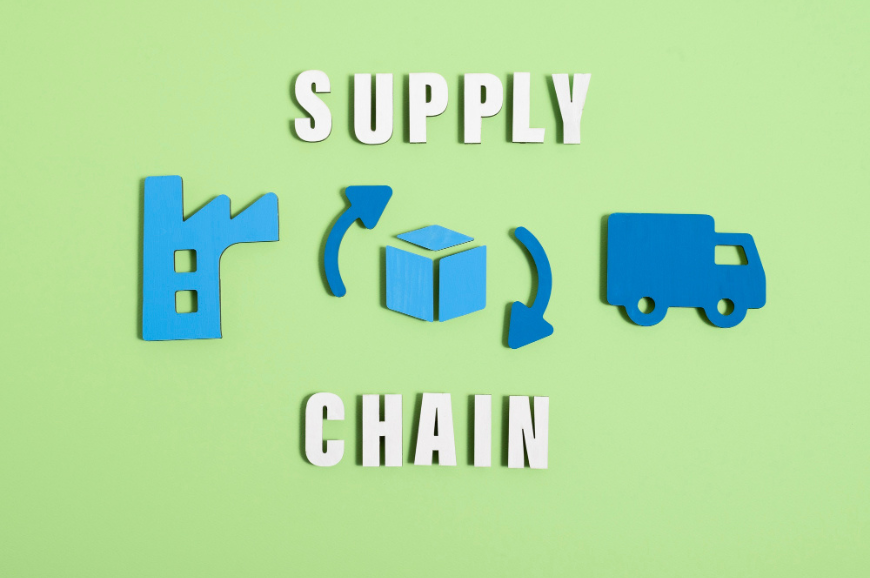
When we are talking about the objectives of supply chain finance it is of utmost importance to briefly explain what supply chain finance actually is before delving deeper into the topic.
SCF refers to a set of financial solutions that optimise the efficiency of transactions between buyers, suppliers, and financial institutions within a supply chain. It involves various techniques and tools aimed at enhancing cash flow, minimising risk, and improving collaboration among the different parties involved in the supply chain.
In modern business operations, SCF holds significant importance. It enables companies to better manage their working capital by providing opportunities for suppliers to receive early payment while allowing buyers to extend their payment terms. This dynamic helps improve the financial health of all participants in the supply chain. Moreover, SCF fosters stronger relationships between buyers and suppliers, leading to increased trust and transparency in transactions. By leveraging SCF, businesses can streamline operations, reduce costs, and enhance overall supply chain resilience in the face of economic uncertainties or disruptions.
But to get a clearer picture of what the objectives of supply chain finance are, and how they improve the overall supply chain management, we are going to get a detailed look at each of the 4 main objectives.
Objective 1: Optimising working capital
The first objective of supply chain finance is that it plays a pivotal role in enhancing cash flow management throughout the supply chain. It operates as a financial solution that optimises the cash conversion cycle by facilitating the efficient movement of funds between buyers, suppliers, and financial institutions. One of its primary objectives is to expedite payment processes, ensuring timely payments to suppliers while allowing buyers to extend their payment terms. This mechanism significantly improves the overall cash flow within the supply chain.
SCF functions through various techniques like invoice financing, supply chain lending, and dynamic discounting.
The role of SCF in reducing working capital requirements for all parties involved is substantial. For suppliers, it diminishes the need for high levels of working capital, as they can convert their accounts receivables into immediate cash through financing options. This reduction in working capital requirement allows suppliers to allocate resources more efficiently, invest in growth initiatives, and potentially negotiate better terms with their own suppliers or service providers.
Similarly, for buyers, SCF enables them to extend payment terms without negatively impacting their suppliers. By lengthening payment cycles, buyers can preserve their own working capital, utilising it for strategic investments, operational improvements, or other business needs. This ability to optimise working capital benefits both parties by enhancing financial stability and liquidity along the supply chain.
Objective 2: Strengthening buyer-supplier relationships
The second one of the supply chain finance objectives is to serve as a dynamic bridge between buyers and suppliers, fostering robust relationships built on mutual trust and support. One of its main roles lies in cultivating stronger ties between these entities by enabling timely payments. Through SCF mechanisms, buyers can settle invoices swiftly, ensuring suppliers receive their dues promptly. This reliability in payments cultivates a sense of reliability and stability, nurturing a foundation of trust between both parties. Such punctuality fosters a positive environment, enhancing the partnership beyond mere transactions into a collaborative, long-term relationship.
Moreover, SCF goes beyond timely payments by offering crucial financial support to suppliers. With the help of SCF solutions, suppliers gain access to favourable financing options. Consequently, suppliers perceive the buyer not just as a customer but as a partner invested in their success. This financial backing reinforces the bond, leading to enhanced loyalty, commitment, and a shared interest in mutual prosperity.
The benefits of SCF, in terms of timely payments and financial support for suppliers, extend far beyond mere monetary transactions. They lay the groundwork for a symbiotic relationship wherein both parties thrive. Timely payments and financial assistance create a virtuous cycle of trust, reliability, and collaboration, fortifying the buyer-supplier relationship and ensuring the continuity and resilience of the supply chain. Ultimately, SCF isn’t just about financial transactions; it’s about nurturing enduring partnerships built on shared goals and mutual support.
Objective 3: Mitigating risk
The third objective of SCF is to mitigate financial risks inherent in complex supply chains. One key method is through risk diversification. SCF allows for the allocation of financial resources across various points in the supply chain, reducing dependency on any single entity. By spreading financial involvement among different suppliers or partners, companies can minimise the impact of disruptions or financial volatility at any specific stage. This diversification as an objective of supply chain finance, acts as a buffer against localised risks, ensuring that the entire supply chain isn’t compromised due to issues with a single vendor or segment.
Improved financial visibility is another cornerstone of SCF risk mitigation. SCF enhances transparency and real-time insight into financial transactions and activities within the supply chain through advanced technologies and platforms. This heightened visibility enables companies to proactively identify potential risks, such as late payments or cash flow bottlenecks, allowing for prompt intervention. With better visibility, stakeholders gain a clearer understanding of the financial health of their partners or suppliers, enabling more informed decision-making and risk mitigation strategies.
Additionally, SCF fosters the implementation of financial instruments like supply chain financing programs or dynamic discounting. These mechanisms facilitate smoother cash flows, reducing the risk of liquidity shortages or delayed payments. For instance, by offering early payment options to suppliers at a discount, companies can ensure a more predictable cash flow while also incentivising timely deliveries or services. This not only mitigates financial risks but also promotes stronger relationships and collaboration within the supply chain network.
Furthermore, SCF embraces the use of risk assessment tools and predictive analytics. These technologies analyse historical data, market trends, and other relevant factors to forecast potential risks within the supply chain. By identifying and quantifying risks in advance, companies can proactively implement measures to mitigate these threats. For instance, predictive analytics can forecast disruptions due to geopolitical factors or natural disasters, allowing companies to strategise and diversify supply sources or adjust inventory levels accordingly.
Objective 4: Enhancing efficiency and cost reduction
Finally, the fourth one of the supply chain finance objectives brings forth a streamlined approach to financial processes within the supply chain, significantly reducing inefficiencies. One notable aspect is the optimisation of cash flows. SCF facilitates smoother and faster transactions by leveraging financial instruments such as invoice factoring or supply chain financing programs.
SCF also helps in reducing administrative burdens that often plague traditional financial processes. By digitising and automating various tasks such as invoicing, approvals, and payment reconciliations, SCF eliminates manual intervention and associated errors. Automation not only expedites these processes but also enhances accuracy and transparency. For instance, with automated invoice processing, discrepancies or delays in payments can be swiftly identified and rectified, reducing the time and resources spent on resolving these issues. This reduction in manual intervention streamlines operations, allowing teams to focus on strategic initiatives rather than routine administrative tasks.
The potential for cost savings through SCF is substantial. Optimised cash flows lead to reduced working capital requirements, thereby minimising the opportunity cost of idle funds. Early payment discounts offered through SCF programs can result in direct cost savings for companies, enabling them to capitalise on discounts while fostering stronger supplier relationships. Additionally, the reduction in administrative difficulties translates into saved time and resources.
Furthermore, SCF promotes efficiency by fostering collaboration and trust within the supply chain ecosystem. Improved financial visibility and access to financing options enhance the relationships between buyers and suppliers.
Conclusion
Implementing a supply chain finance program having in mind the main objectives of supply chain finance enables corporations to achieve targeted results for both their organisation and suppliers. While financing costs and a robust technology platform are crucial elements in Supply Chain Finance programs, a successful implementation and continual management of a financing facility demand more than these alone.
At Liquiditas, our expert team specialises in assisting companies with implementing new financing options, ensuring enduring advantages for all involved parties. Reach out to discover how our tailored solutions can elevate your organisation’s supply chain finance initiatives.

